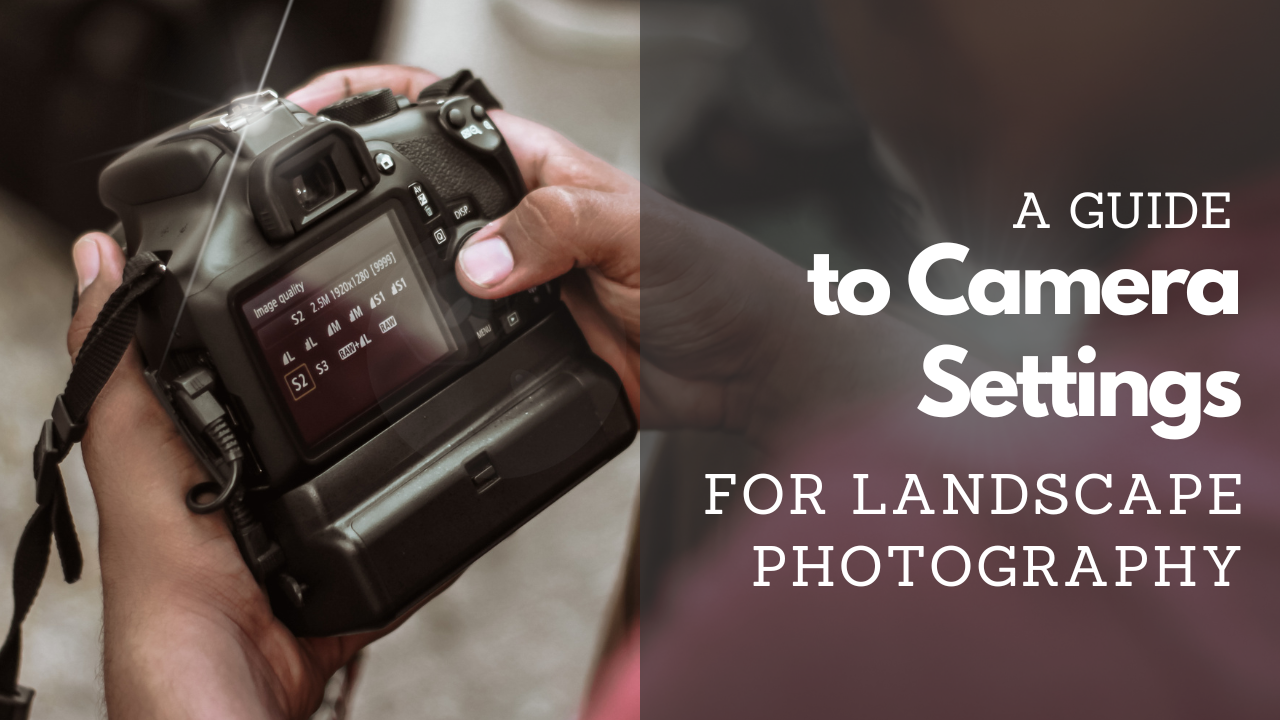A Guide to Camera Settings for Landscape Photography

Landscape photography takes skill, creativity, and a good understanding of camera settings to make a great landscape photo. Knowing which camera settings are best for landscape photography can help you create beautiful photos that capture the beauty of nature in all its glory. In this article, we will discuss the optimal camera settings for landscape photography, including shutter speed, ISO setting, aperture size and more. With these tips in mind, you should be able to take some amazing photographs!
When shooting with my Nikon D850, typically, my settings are;
Shooting Mode: Aperture Priority
File Type: RAW
ISO: Base ISO64
White Balance: Auto
Focus: Single-point AF
Metering Mode: Matrix
EV Compensation: start at 0 and adjust as required
Long Exposure NR: OFF
Below we will go through each camera setting in more detail.
File Type: RAW is the optimal setting for capturing photos when shooting landscape photography. RAW files are uncompressed and contain more detail than a JPEG file, allowing you to do more with your image in post-processing. The other benefit of RAW files is that in the future with advancements in post-processing, you may be able to recover more dynamic range from your photos.
If you shoot in JPEG format, you are more limited in post-processing and cannot make as many adjustments to your image.
ISO setting: The camera’s ISO setting determines how sensitive it is to light. For landscape photography, you will generally want to keep the ISO at your cameras base ISO setting. Usually a low setting of 100 or 200. This will allow you to take sharp photos without too much digital noise. If having a low ISO means your shutter speed is not fast enough to freeze motion then increase the ISO to speed up your shutter speed. The byproduct of increasing your ISO is that the image will have more digital noise compared to if you had kept it at a lower setting.
White balance: If you are shooting RAW select Auto White Balance as you can adjust the white balance in post-processing. Your camera’s white balance settings determine how colours will appear in the final image. Changing this when shooting will depend on the lighting situation you are in. If you are shooting under shade, for example, then switching to a Shade white balance or Cloudy if there is some cloud cover can help improve the colours in your image.
Focus mode: The camera’s focus mode settings determine how the camera will focus on each subject in the photo. For landscape photography, you should use a manual or auto-focus setting and choose a single point of focus. When focusing, try and select something in the foreground of your photo that has good contrast, such as a tree or rock. This will help ensure that your camera focuses correctly and the entire photo is sharp. This will also make sure that your image is more likely to be in focus from front to back.
If your camera has focus peaking then you can use manual focus and the camera will show you which areas of your image are in focus.
Metering mode: The camera’s metering mode determines how much light it uses to take a photo. For landscape photography, you should generally use either Matrix or Spot metering. Matrix metering will measure the light from multiple points in your photo and average out the exposure, while spot metering only measures a small area of your photo (usually where you focus) and can be useful for tricky lighting situations.
Exposure Compensation: Exposure compensation is a camera setting that allows you to adjust the camera’s exposure settings away from what it thinks is correct. This can be useful if you want to make your photos brighter or darker. For landscape photography, a good starting point would be 0 and then adjust as needed.
Shutter speed: The camera shutter speed is one of the most important camera settings for landscape photography. A slow shutter speed allows more time for light to enter the camera, so it’s best to use a slower shutter speed when shooting landscapes in low light. This will allow your camera to capture more light and detail, resulting in better images.
You can also use a longer shutter speed to deliberately blur movements such as clouds, water, or trees in the wind. This type of motion blur can add a unique and creative touch to your landscape photographs.
Aperture size: The camera’s aperture setting determines the amount of light that enters the camera and how much of the image will be in focus (depth of field). For landscape photography, an aperture of around f/8 to f/11 is usually used. This will allow you to have a good balance between sharpness and depth of field so that most of the image is in focus.
Long exposure noise reduction: If you are shooting long exposures, such as landscape photos at night or during sunset/sunrise, your camera manual will want you to turn on long exposure noise reduction. This is supposed to help reduce any digital noise that can be introduced during a long exposure. However, I have found that this just takes time, uses the battery and can be done in post-processing. For this reason, I recommend turning this off and doing the noise reduction in post-processing.
These camera settings are just a starting point for landscape photography and you should experiment to find the settings that work best for you. Every camera is different, so it’s important to get a feel for yours and learn how to adjust the camera settings to get the best results. Good luck!
Download your free copy of my Landscape Photography Camera Setup Checklist
Even the most experienced photographers can ruin a photo with one small mistake. You spend all that time setting up your tripod and camera, but forget to check one thing and the photo is ruined.


